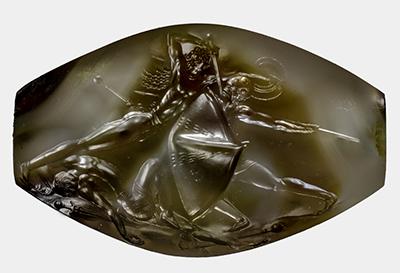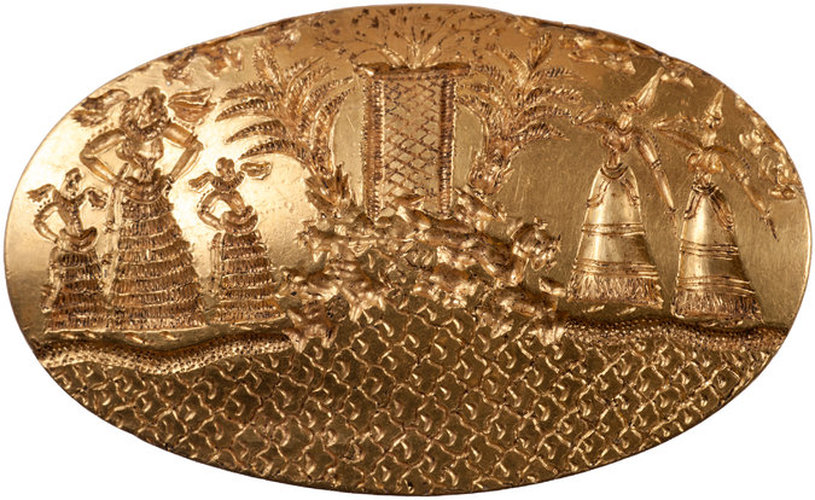
The “Pylos Combat Agate,” as the seal has come to be known since it was unearthed in Pylos, in the Peloponnese, depicts a fierce hand-to-hand battle. It is the latest and most significant treasure to emerge from the “Griffin Warrior Tomb”, which was hailed as the most spectacular archaeological discovery in Greece in more than half a century when it was uncovered in 2015.

The limestone-encrusted seal took over a year to be cleaned and reveal its artistic beauty and historical importance, a true masterpiece as archaeologists called it. They say that the Pylos Combat Agate’s craftsmanship and exquisite detail make it the finest discovered work of glyptic art produced in the Aegean Bronze Age.
Such exquisite detail in the representation of the human body was not seen until the classical period of Greek art, 1,000 years later. All that meticulously carved on a piece of hard stone measuring just 3.6 centimeters, or just over 1.4 inches, in length. Indeed, many of the seal’s details; such as the intricate weaponry ornamentation and jewelry decoration, become clear only when viewed with a powerful camera lens and photo microscopy.
The miniature masterpiece portrays a victorious warrior who; while plunging his sword into the shielded man’s neck, is turning his head to his next enemy in battle.
It is a portrayal of an epic, larger-than-life battle, that conjures heroes such as the ones described by Homer in “The Iliad”. Researchers say it reflects a legend that was well known to Minoans and Mycenaeans.

According to researchers, the Minoans were producing art that seems impossible to have been produced at the time. They find the detailed reproduction of movement and human anatomy as well beyond their time. That in itself prompts a reconsideration of the evolution and development of Greek art, and prehistoric art as well.
See all the latest news from Greece and the world at Greekreporter.com. Contact our newsroom to report an update or send your story, photos and videos. Follow GR on Google News and subscribe here to our daily email!



